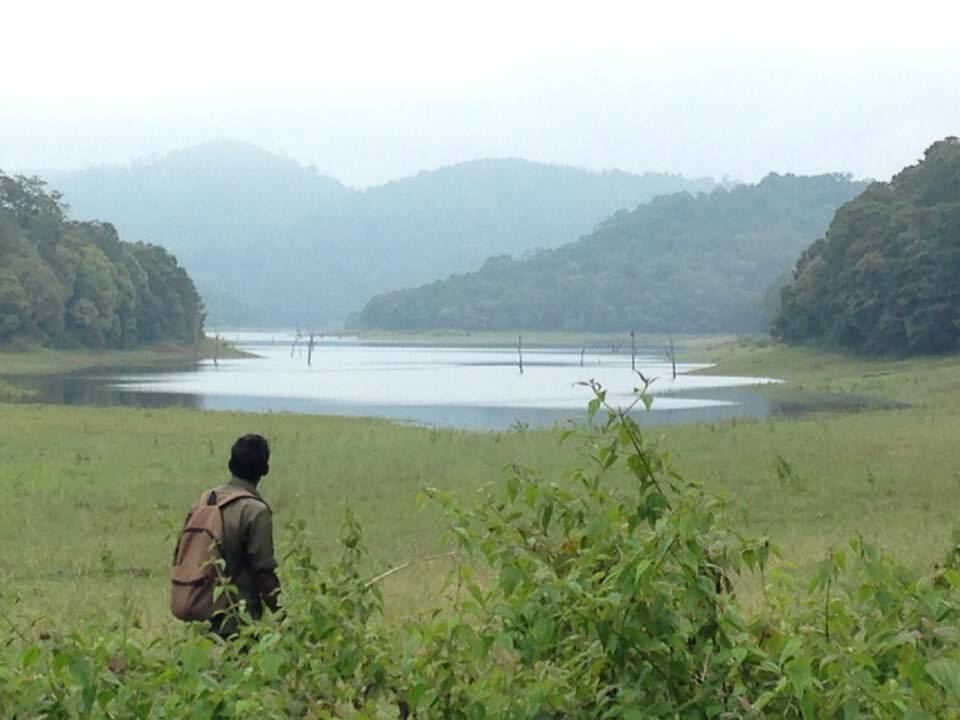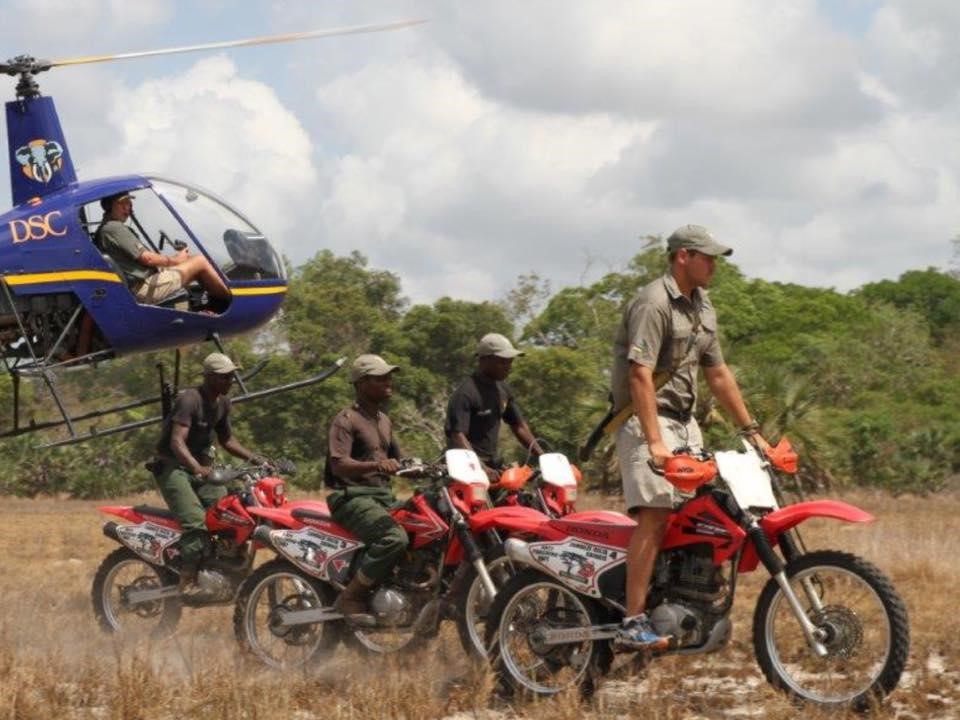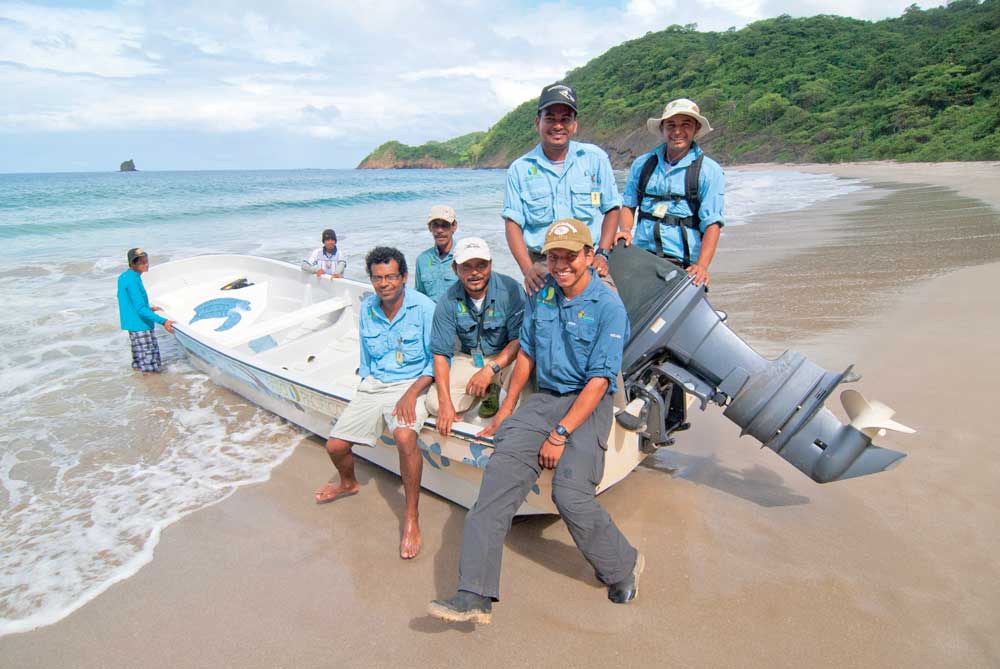Bears are emerging from their winter dens. Whales are giving birth to new calves. Elk are nibbling on emerging spring grasses. Amidst the chaos disrupting the human world, nature continues to work its magic. This National Wildlife Week, we celebrate the innovative leaders that are getting the incentives right to conserve the wildlife that makes our world so diverse and exciting.
Many at-risk species around the world are threatened by poaching. Some animals are killed because their parts fetch a high price on the black market for decoration or traditional medicine. Other animals are poached for food or because they are a nuisance to the humans that live in close proximity. In these cases, wildlife is poached because poachers consider it worth more dead than alive.
Many governments have tried to protect wildlife with laws and bans on wildlife trade, yet poaching continues to ravage animal populations around the world. In certain areas, however, innovative wildlife managers have begun hiring poachers. Through steady jobs with reliable wages, poachers are becoming wildlife protectors.
Periyar Tiger Reserve
The Periyar Tiger Reserve in southern India faced a rampant poaching problem. In a national park established to protect tigers and biodiversity in the forested region, smugglers were killing the big cats because of the high price they fetched on the black market.
Though India placed high punishments on illegally killing wildlife, poachers continued to risk their lives to sell tiger parts in Chinese markets. Asian buyers were willing to pay top dollar for tiger bone wine, a tonic believed to make drinkers as strong and vigorous as the animal the wine was made from. Tiger pelts were likewise in high demand as decor for the wealthy. In impoverished rural areas, the potential to make money spurred many to risk poaching.
Well aware of the wildlife destruction occurring at the hands of poachers, reserve officers knew that their efforts to police poaching were not enough. With support from the World Bank’s India Ecodevelopment Project, officers in the Periyar knew they needed a new approach and launched a program to hire poachers as wildlife protectors. With many of the poachers on the run or facing jail time, they were promised that outstanding charges would be dropped if they joined the Periyar Tiger Reserve’s anti-poaching team.
Twenty of the poachers agreed and put their first-hand knowledge of the forest and poaching operations towards protecting tigers and the reserve. The results have been incredible—the number of tigers in the reserve has more than doubled, from 21 in 2002 to nearly 50 today. This program, combined with growing tourism, has brought a hopeful future for tigers in the Periyar.
In recalling their transition away from poaching, the reserve protectors emphasize the importance of a steady job. When poaching, they were plagued by risk and problems. As one man commented to the Christian Science Monitor, “Now, my family is not ashamed anymore. My daughter can say where her father works with pride.” By changing the incentives so that protecting tigers was worth more than poaching them, the Periyar Tiger Reserve gained a valuable resource in species conservation and improved the lives of people in the local community.
Coutada 11
A similar story can be told in Mozambique. After years of war and chaos, wildlife numbers in the Zambezi River Delta were tragically low in the early 1990s. But entrepreneur and professional hunter Mark Haldane saw the opportunity to restore biodiversity in Coutada 11, a private wildlife reserve.
Haldane faced an uphill battle to recover the threatened elephants, lions, sable antelope, and other wildlife in the area. In addition to many of the wildlife species in the area being poached to sell animal parts on the black market, local people hunted wildlife and relied on bushmeat in the post-war destruction. For the people on the ground, the wildlife were certainly more valuable dead than alive.
When Haldane founded his business Zambezi Delta Safaris in Coutada 11, he restored habitat and worked with non-governmental organizations to return wildlife, including the lion, to the landscape. He knew anti-poaching units would be essential for the wildlife’s success, so he recruited former poachers from local villages to aid in protecting the wildlife, harnessing their local knowledge for good. It was the first time most of them had ever collected a salary, and the new jobs provided critical income for their families.
With this local focus and engagement, Coutada 11’s cape buffalo herd has grown to 21,000 animals, large enough to serve as a source population for reintroduction efforts elsewhere in Mozambique. Populations of elephants, crocodiles, zebras, hippos, and other species have also rebounded. None of this would have been possible without engaging locals and seeing their potential to be protectors rather than poachers.
Paso Pacifico
Sea turtles return each year to the beach where they were born to lay their eggs. In Central America, where many sea turtle species are endangered, their eggs are poached for food. Though the sale of eggs is illegal, poachers harvest nests under the cover of darkness and sell the eggs, where a single nest of 80 to 120 eggs fetches $40, nearly a month’s earnings for subsistence farmers and fishers. Given such a strong financial incentive to harvest eggs, many poachers are undeterred even by army forces guarding beaches.
In Nicaragua, the non-governmental organization Paso Pacifico is working to change the incentives. Rather than report or arrest poachers, the group patrols turtle nesting beaches and seeks to negotiate with potential poachers to leave eggs on the beach, occasionally paying the poachers to leave nests intact.
Like the examples above, Paso Pacifico has also found that employing turtle egg poachers as beach rangers improves species protection. They not only train the rangers to monitor sea turtles for scientific research and conservation, they also contract with hotels to train new private rangers, who patrol resort beaches and educate visiting tourists. By understanding that the poachers were motivated by a need for income rather than a desire to harm turtles, Paso Pacifico was able to give more baby turtles the opportunity to reach the ocean while creating jobs for local communities.
As these stories from around the world demonstrate, wildlife conservation often hinges on finding ways to make wildlife worth more alive than dead. Anti-poaching laws have failed to completely stop poachers. As these examples demonstrate, however, people will actively work for species and habitat conservation if they are able to make a living protecting wildlife. This National Wildlife Week is an opportunity to celebrate the successes of conservation and look forward to finding more ways to make conservation valuable for people who live with wildlife.







